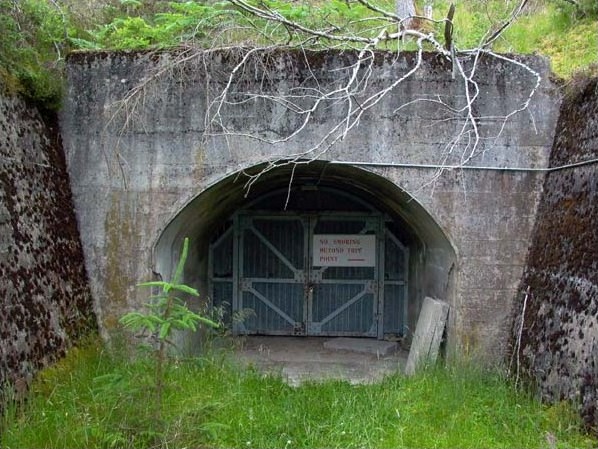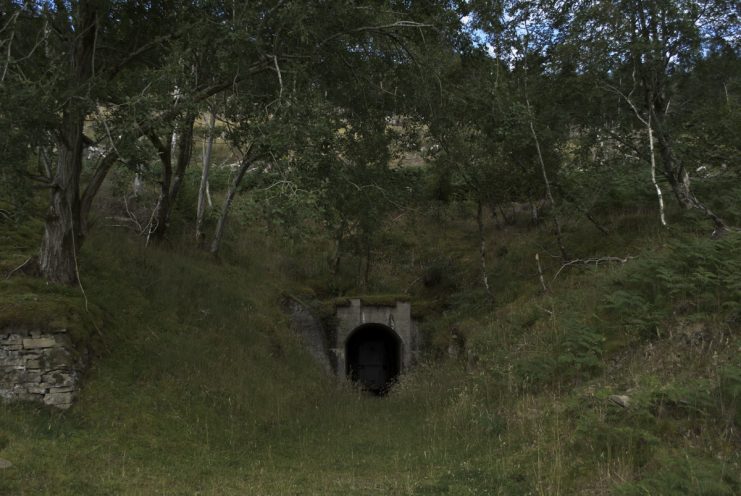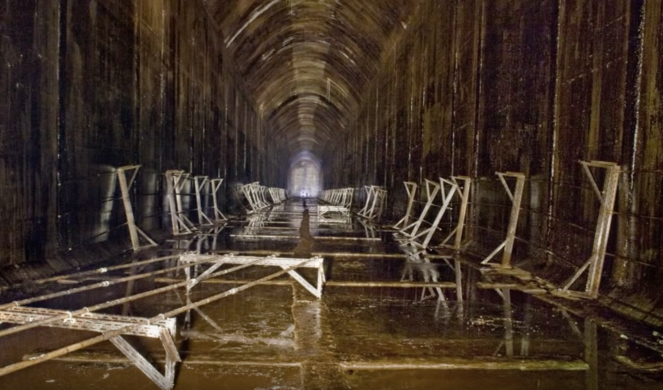In any war, being able to maintain fuel and supply lines for critical supplies is of utmost importance. Being able to store necessary resources and move them where the troops need them, when they need them can be tricky, since supply lines are a frequent point of attack for enemy forces.
During WW2 the Storage and distribution of fuel was vital. One of the facilities put to that use was the Inchindown Fuel Depot in Scotland. It’s located around four miles north of Invergordon and was constructed between 1939 and 1942, according to Secret Scotland.

It was built by the Royal Navy, and was connected to the Royal Navy dockyard, port, and fuel depot at Invergordon by way of underground pipelines, which made it essentially bombproof.
It was one of five such installations located around Scotland at the time, and their purpose was to provide fuel to the Royal Navy in the event that the country’s known fuel depots were blockaded by the Germans.
Across the region, the depot is usually just referred to as ‘The Tunnel’, and it contains six enormous tanks that used to hold the fuel. The tanks are only accessible by way of two tunnels, and they themselves, lack any sort of access doors or hatches.
The only way to enter or exit one of the tanks is through the pipes. Five of the tanks could hold 32 million gallons of fuel. The sixth is a bit smaller, but still very large, overall.

The tanks haven’t been used since the Falklands war, and the heavy fuel oil they used to hold is no longer in use. The tanks have all been cleaned of any harmful residue and have even offered tours for those who don’t mind navigating the dark.
Recently, two photographers, David Allen and Simon Riddell decided to check the Tunnel out, according to the BBC. The friends challenged themselves to take one, usable shot of the first tank, without using digital technology, and then process and print the negative while they are still onsite. They were also shooting film to document their adventure.
In order to do the task, they would have to enter the tank through the pipework, and even spend the night in the underground tank.
Simon was the first of them to arrive, and he took all the equipment the men would need to the tank before David arrived. He transported it using skateboards.
He said that the idea for their project was inspired by his father, who was also a photographer and loved adventure. When his father died, Simon used photography as a way of coping when things got overwhelming, so the two friends are dedicating their film to Simon’s father.
Beside the fact that the tanks are in total darkness, there were other issues that had to be factored in so they could get their picture. One is that no one should use any sources of ignition in or near the tanks, for fear of accidentally causing an explosion.
Another problem is structural. The depot was built below Inchindown hill, and has suffered as the result of several rock falls over the years. The rock falls, combined with the slipperiness of oil residue that covers them, makes for difficult and hazardous terrain.
Finally, the tank is an echo chamber. It’s been called one of the acoustic wonders of the world by Smithsonian magazine and holds the world record for the longest reverberation in a man-made structure, which didn’t exactly help them communicate with other.
Even with all these challenges, Simon and David got their photo and shot their documentary, exiting the tank intact, if exhausted and very cold.
Another Article From Us: US Military Searches British Field for Missing WWII Airman
Their documentary is called One Shot, and follows the men’s trip into the darkness to take and develop a picture of the tank, using a camera of the same style that was used in the 1880s.
The film took first place at the recent Monthly UK Film Festival, and they’re hoping that the film will reawaken people’s interest in the forgotten piece of Scotland’s history which the Tunnel represents.
